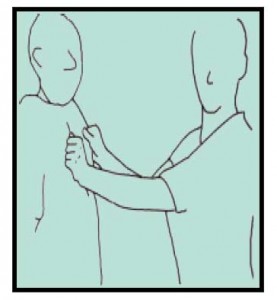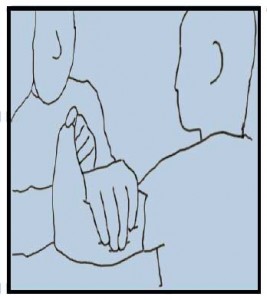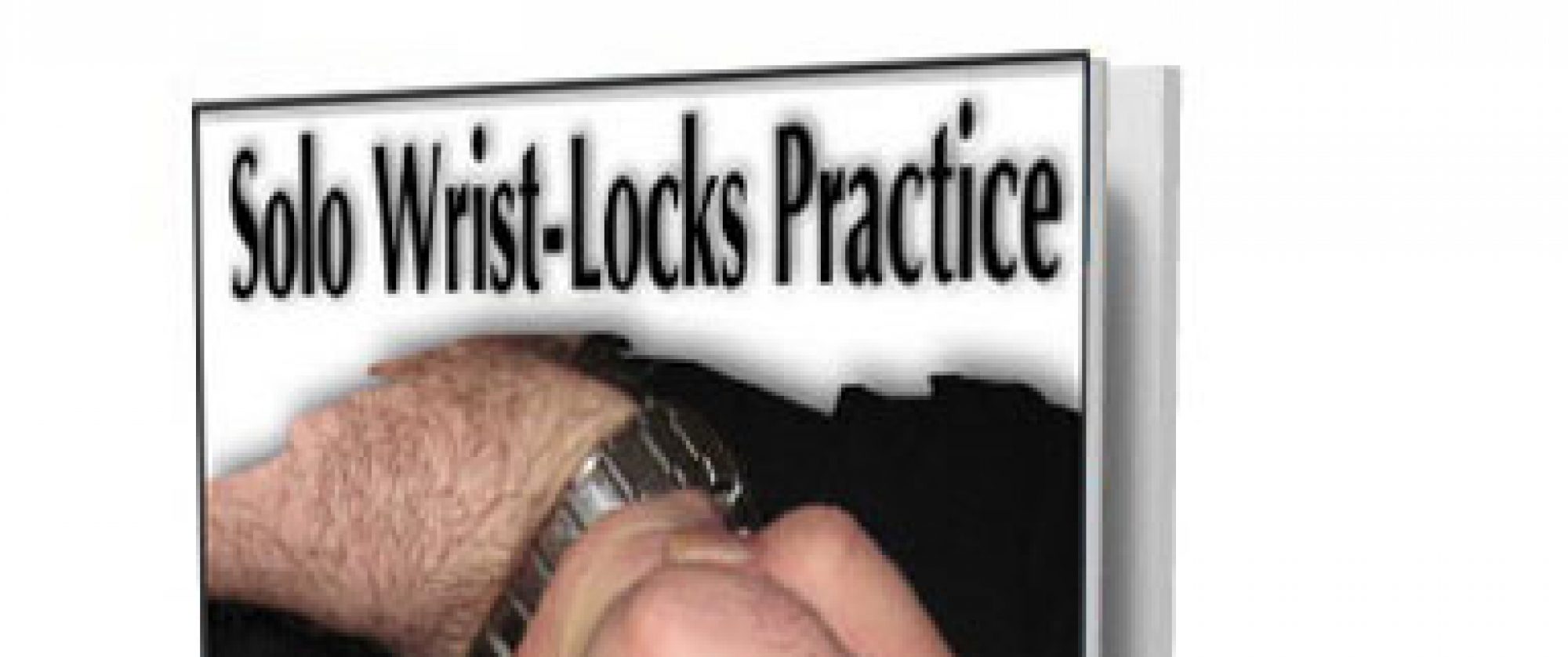Instructors who teach practical self-defense have a major criticism of other martial arts styles.
Their gripe is partially founded, but they shouldn’t completely discount the the “unrealistic aspect of wrist-locks practice.”
[features_box_yellow width=”75%” + border=”2px”]Note: Follow the progression of this article to the end, and you’ll get a secret training tip. No kidding.[/features_box_yellow]
I’m talking about the unrealism of practicing wrist locks against a partner, while you both just stand there, facing each other. Most hand-to-hand combat instructors poo-poo this gentle, stand-there-passively mode of training.
As I said, they are partly right….
[headline_georgia_medium_left color=”#000000″]The Learning Stage[/headline_georgia_medium_left]
 These instructors would have your partner put up a lot of resistance, as you try each of your moves. They’d make sure each time your training partner grabbed you, that you got shaken to the core with violent grabs, trips, and so on.
These instructors would have your partner put up a lot of resistance, as you try each of your moves. They’d make sure each time your training partner grabbed you, that you got shaken to the core with violent grabs, trips, and so on.
Great. There’s a time and a place for this type of training, and we’ll get to it, and more, in a minute. However …
When you’re first learning a lock, you don’t need the distraction, of resistance.
Did you get that?
I know that I’m going against popular thought, but I think you need a cooperative stage when first learning a wrist lock or joint lock. In fact, you need your partner to tell you when you’re causing pain.
This is a learning stage; how are you supposed to know the exact precision needed to find the most pain. You need a practice partner to help you.
The stand there and experiment phase is fine, as you are trying to learn the least force to cause the most effect.
[headline_georgia_medium_left color=”#000000″]Resist a Little[/headline_georgia_medium_left]
In the next stage of wrist lock perfection, have your partner resist a little. Still, no need for complete a-hole resisting. You want to get the feel of effecting the lock while your partner grabs you a little tighter, winds up for a punch, and starts to wrestle you a little.
[headline_georgia_medium_left color=”#000000″]More Wrist Locks Resistance[/headline_georgia_medium_left]
Progress more and more. Have your partner try to shake you to the ground, trip you, grapple you, and completely rough you up. While all of this is going on, you are put on your most appropriate lock for the situation and position.
Now, remember how I said that you’d get a secret to practicing effectively?
The secret is to figure out exactly how your partner would grab and subdue you. Experiment to determine the kind and level of force that a real attacker would employ given the situation, and the positions.
Once you know exactly what level of intent and violence would be used, add an additional variable. Make it harder than a real situation.
 If your attacker would try to grab and shake you, have your partner grab, shake, and trip you. Maybe have your partner try to knee you in the middle of the grab.
If your attacker would try to grab and shake you, have your partner grab, shake, and trip you. Maybe have your partner try to knee you in the middle of the grab.
Just make it more difficult than normal.
The idea is that if someone really does attack you aggressively, and you decide at some point to lock, it will feel easy, because of your practice method.
One last thought: depending on the situation, you can make your lock easier by hitting hand kicking first. It’s easier to lock someone who has been “tenderized.” (Careful of any legal ramifications. This is a theoretical discussion, only.)

